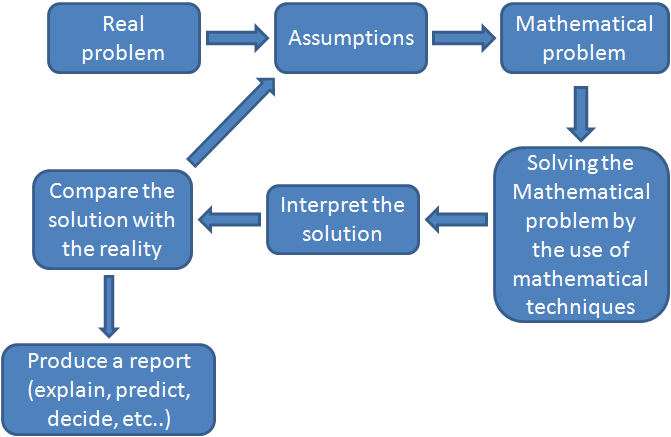Theoretical Framework
Contextualization
One of the great challenges of mathematics teachers is to keep students motivated to the study
of math. The abstraction and the lack of applicability of the subjects taught has been the major cause of dropout in this discipline. Nowadays, the technologies can be used to support teaching, making maths a tangible science.
How do you use the technologies in teaching/learning methodologies?
Mathematical Modeling
Simulation
Project-Based Learning
Mathematical Modeling
Mathematical Modeling is a process that transforms a real situation into a mathematical problem by a model (Blum, 1995).
Cycle of modeling by Blum

- The Modeling constributes significantly to reflections (Biembengut et Hein, 2000);
- The Modeling provides a learning environment based on research (Biembengut et Hein, 2000);
- The Modeling requires mathematical and technological knowledges to construct the model (Skovsmose, 1998).
Simulation
Simulators can take many forms and can present in differents fields of knowledge (Jonassen, 1996).
Simulators should be:- Exploratory learning environments;
- Spaces of discovery where students can manipulate, explore and experiment, developing their skills and of the discovery of the simulated world objects.
Project-Based Learning (PBL)
PBL allows to acquire scientific and technological knowledge, develop skills in the project development, problem solving, communication, teamwork, responsibility to colleagues and society, etc (Masson et al., 2012).
- The models based on PBL are more efficients in the engineering areas than models based on theoretical lessons.
- The goals and specific curricula are incorporated in project management.
- The teacher’s role is to be a learning coach (motivate the student to search for information, encourage to learn, awareness of the difficulties, work together, listen other opinions, etc..).
- Students must take responsibility for their own learning.